Using frozen section to identify histological patterns in stage I lung adenocarcinoma of ≤ 3 cm: accuracy and interobserver agreement
- PMID: 24889415
- PMCID: PMC4536823
- DOI: 10.1111/his.12468
Using frozen section to identify histological patterns in stage I lung adenocarcinoma of ≤ 3 cm: accuracy and interobserver agreement
Abstract
Aims: The IASLC/ATS/ERS classification of lung adenocarcinoma provides a prognostically significant histological subclassification. The aim of this study was to investigate the accuracy, limitations and interobserver agreement of frozen sections for predicting histological subtype.
Methods and results: Frozen section and permanent section slides from 361 resected stage I lung adenocarcinomas ≤ 3 cm in size were reviewed for predominant histological subtype and the presence or absence of lepidic, acinar, papillary, micropapillary and solid patterns. Fifty cases were additionally reviewed by three pathologists to determine interobserver agreement. To test the accuracy of frozen section in judging degree of invasion, five pathologists reviewed frozen section slides from 35 cases with a predominantly lepidic pattern. There was moderate agreement on predominant histological subtype between frozen sections and final diagnosis (κ = 0.565). Frozen sections had high specificity for micropapillary and solid patterns (94% and 96%, respectively), but sensitivity was low (37% and 69%, respectively). The interobserver agreement was satisfactory (κ > 0.6, except for the acinar pattern).
Conclusions: Frozen section can provide information on the presence of aggressive histological patterns-micropapillary and solid-with high specificity but low sensitivity. It was difficult to predict the predominant pattern on the basis of frozen sections, mostly because of sampling issues.
Keywords: frozen sections; histological subtype; invasion; limited resection; lung adenocarcinoma; micropapillary; solid.
© 2014 John Wiley & Sons Ltd.
Conflict of interest statement
All authors affirm that we have no actual or potential conflicts of interest, including any financial, personal, or other relationships with other people or organizations.
Figures
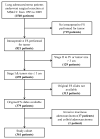
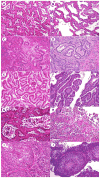
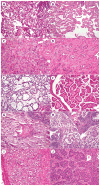
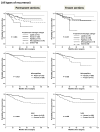
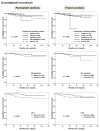
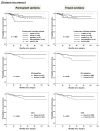

References
-
- Jemal A, Bray F, Center MM, Ferlay J, Ward E, Forman D. Global cancer statistics. CA Cancer J Clin. 2011;61:69–90. - PubMed
-
- Devesa SS, Bray F, Vizcaino AP, Parkin DM. International lung cancer trends by histologic type: Male:Female differences diminishing and adenocarcinoma rates rising. Int J Cancer. 2005;117:294–299. - PubMed
-
- Youlden DR, Cramb SM, Baade PD. The international epidemiology of lung cancer: Geographical distribution and secular trends. J Thorac Oncol. 2008;3:819–831. - PubMed
-
- Fukui T, Sakakura N, Mori S, et al. Controversy about small peripheral lung adenocarcinomas: How should we manage them? J Thorac Oncol. 2007;2:546–552. - PubMed
Publication types
MeSH terms
Grants and funding
LinkOut - more resources
Full Text Sources
Other Literature Sources
Medical

